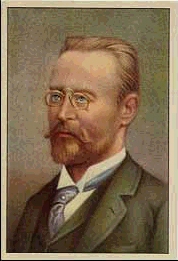The Incandescent Mantle
The invention of primary importance in the evolution of the paraffine mantle lamp is that of the incandescent mantle.

Welsbach's (Carl Auer Freiherr von Welsbach) invention of the incandescent mantle in-1885 is too well-known to need detailed explanation here. It is of interest however, that his original proposal of a cotton or ramic fabric impregnated with a mixture of 99 percent Thoria and 1 percent Ceria has unaltered and mantles for oil lamps are still manufactured by burning off the fabric and leaving a delicate skeleton of oxides which is dipped in a mixture of Collodion, ether, camphor and castor oil to strengthen the skeleton structure and enable it to endure transport. It is also of interest that Welsbach in his original specification referred to an "Illuminant appliance for gas and other burners" from which it is inferred that he envisaged the application of his invention to oil burners. In common with many other inventors, Welsbach had to wait for several years before his invention was adopted in practice, but by 1893 the incandescent mantle became a commercial success and was followed quickly by numerous proposals for applying Welsbach mantles to gas and oil burners.
The earliest illustrations of incandescent oil lamps are in the patents granted to Graetz in 1892 and to Mueller in 1895 covering what was known as the E.R.A.lamp. The invention described by Graetz is not a mantle lamp, but a lamp designed to produce a blue flame for bringing refractory materials to an incandescent state (Fig. 6).

The lamp had an annular wick, inner and outer air supplies and a disc flame spreader. The burner is described as adapted to produce a blue flame of little luminosity but of intense heat which is capable of being employed for bringing refractory such as lime or wire gauze into an incandesant state and thus obtaining a verry billiant light."
As to the manner in which these refractory materials are applied to the burner the specification is silent, but nevertheless the invention is a direct ancestor of the mantle lamp. Mueller's lamp (1895) is of greater importance as it includes "a mantle of the kind employed for gas lighting, thus producing a brilliant light." The construction of the lamp includes an annular wick with a pernment wick top of asbestos fibre (Fig. 7).

Air is supplied internally through an inner wick tube and externally through regulatable inlets to the core into which the mantle skirt descends.
A perforated spreader deflects the flame from the wick top outwardly to the mantle. The Mueller construction brought together the Argand burner, Houghtons annual wick, the inner and outer air passages and the perforated flame spreader, all features which form the fundamental structure of the present-day mantle lamps, although many detailed improvements and modifications have been made in the succeding years.